Long-tailed tits, scientific name Aegithalos caudatus, are adorable songbirds. Here, we provide a complete overview of the long-tailed tit, including their diet and song.
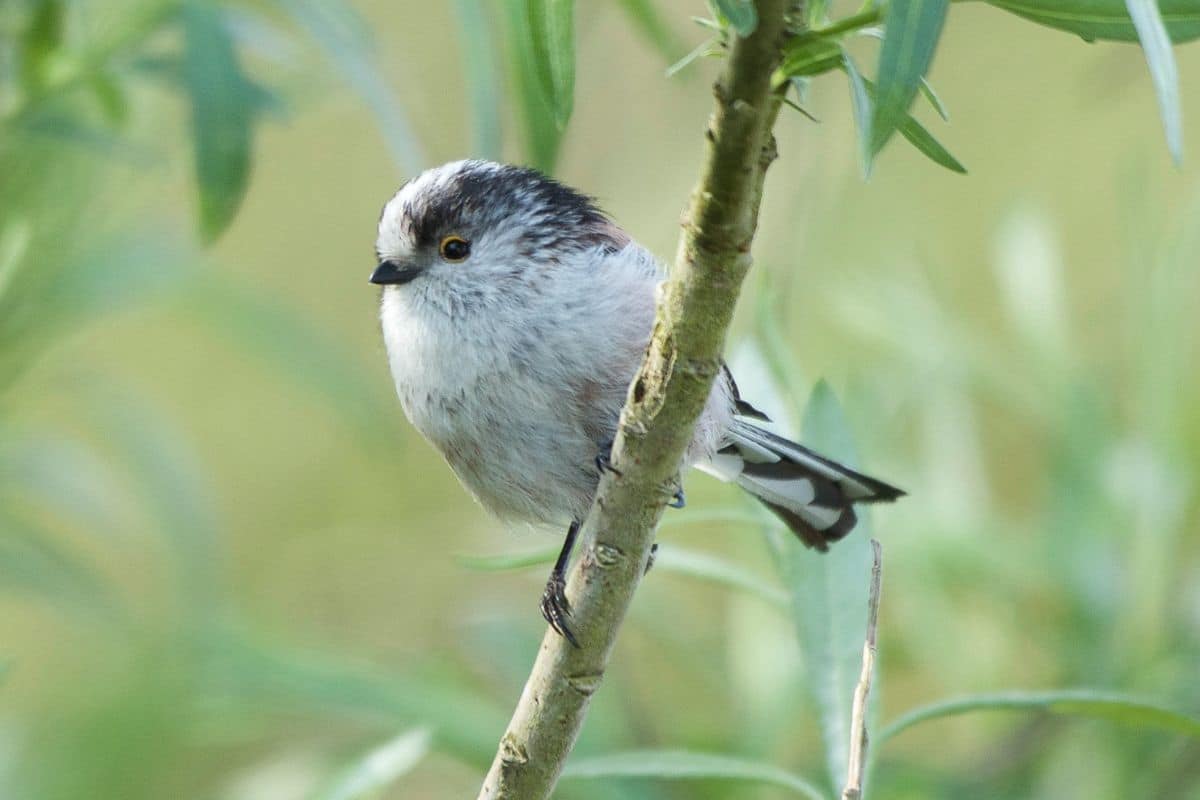
Contents
What Does a Long-Tailed Tit Look Like?
Long-tailed tits are small, chunky birds with stubby beaks. Adult long-tailed tits have white heads and chests with black and pinkish-brown feathers along their wings and backs. They are most easily identified by their long, black tails that extend several inches behind them.
Adult long-tailed tits weigh no more than 10 grams and have a 16-19cm wingspan. From their heads to the tips of their tails, they are about 14 cm long on average.
Juvenile long-tailed tits tend to have darker faces and a more ruffled appearance, though they retain the long black tail that makes them unique.
Where Can I See Long-Tailed Tits?
Long-tailed tits are common across Europe and Japan. They can also be found in some places in Middle Asia, including northern Mongolia and southern Russia.
Long-tailed tits live in wooded or forested areas, parks, and gardens. They are occasionally found in bushy areas around farms, though they prefer more vegetated areas.
Long-tailed tits are avid users of bird feeders, so they are easy to spot if you set up snacks for them in your garden.
What Do Long-Tailed Tits Eat?
Long-tailed tits, like many species of tit, primarily feast on insects. Their favorite insects include moth and butterfly eggs and larvae.
Long-Tailed Tit Lifespan
Long-tailed tits usually live for one to three years. This short lifespan means that long-tailed tits will only reproduce once or twice in their lives. Fortunately, long-tailed tits tend to have large clutches (eggs at one time), ranging from 8 to 11, depending on the region.
Long-Tail Tit Nesting & Reproduction
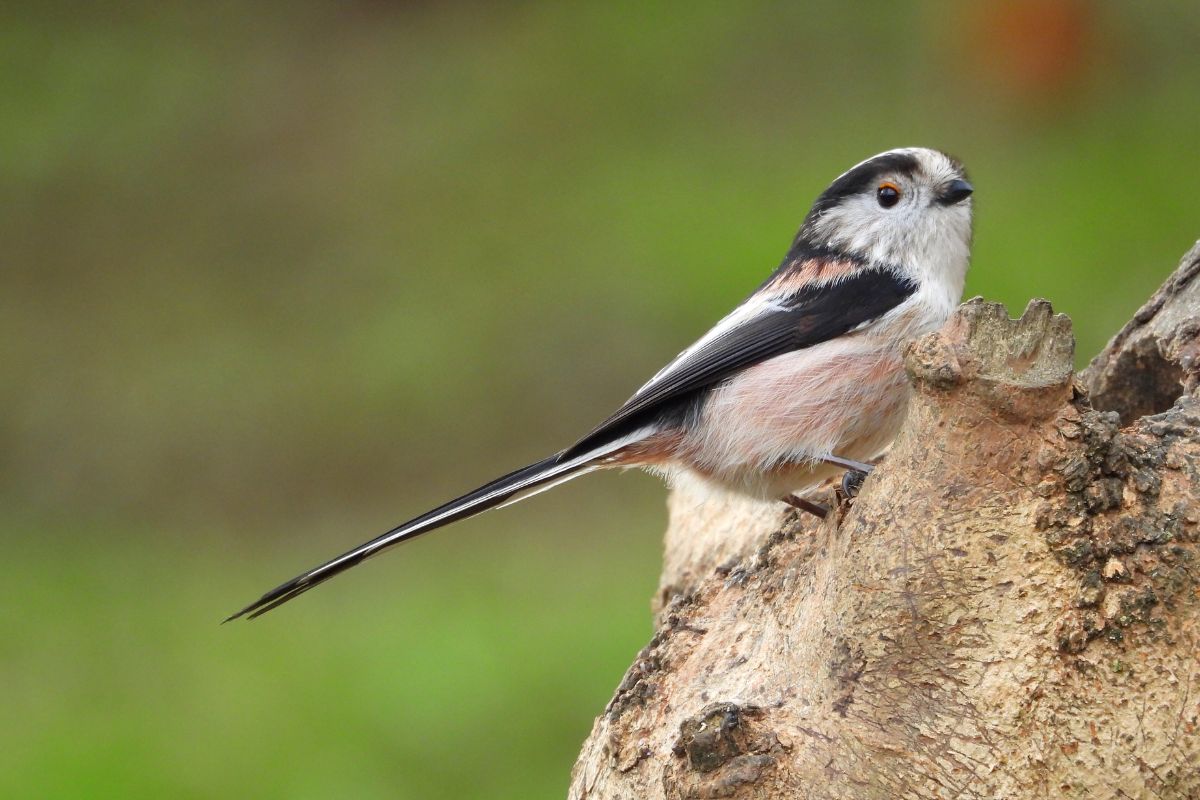
Long-tailed tits, like many birds, follow a long and challenging process to construct their nests carefully. Care is taken to build a structure that will house vulnerable eggs and chicks as safely as possible. The process takes many months, lots of resources, and a lot of energy for the nesting birds.
Building The Nest
Long-tailed tits will begin building their nests in late February to early March. Their nests are easy to spot because they tend to be made in the open. Long-tailed tit nests are built as large, elongated, hollow spheres. These spheres have a hole towards the top for the tits to enter and exit as needed.
The obviousness of these spherical nests provides an easy way to identify long-tailed tits for onlookers, but they are dangerous for small birds. Predation of nests is common, and many long-tailed tits do not survive the reproductive season.
Their unique spherical nests also mean that long-tailed tits rarely use bird boxes, as they do not like to home in already-enclosed spaces. Instead, their nests can be found in trees, hedges, and fences.
The outside of their nests is built with moss, hair, lichen, and spiderwebs. This provides a solid foundation for the delicate process of crafting the inside of the nest. The interior is lined with feathers from the nesting female and other soft materials to make a perfect space for eggs and chicks.
Feathers are one of the most significant parts of a tit nest, with some estimates stating they represent 41% of the mass of the nest, though you wouldn’t know it from the outside. As an onlooker, long-tit nests appear to be made almost entirely of moss and lichen. However, inside is a soft and warm cocoon, perfect for caring for eggs and young chicks.
Laying and Caring for the Eggs
After the nest is built and ready, it is time for the female long-tailed tit of the mating pair to lay her eggs. Over a few days, she will lay 8 to 11 eggs. Only 30% to 40% of these eggs will reach adulthood.
Long-tailed tit eggs are small, cream-colored eggs with orange speckles. They usually weigh no more than a paperclip and are around 10mm to 14mm long- about the size of a peanut.
The mother bird will pull feathers from her lower half to expose her skin. This exposed area is called a brood patch. Many species of birds create brood patches. These patches of skin will rest against the eggs and provide more warmth than feathers alone.
The mother will incubate these small, fragile eggs as much as possible without leaving the nest. Her partner will bring her food so that she can spend as much time as possible at home. If the parents are lucky and do not face predators, their eggs will hatch in 13 to 17 days.
In many cases, the parents will lose one or two eggs. Eggs fail for many reasons. Sometimes, it is because of chemicals in urban areas. Other times, the mother could not keep all her eggs warm enough.
Raising the Chicks
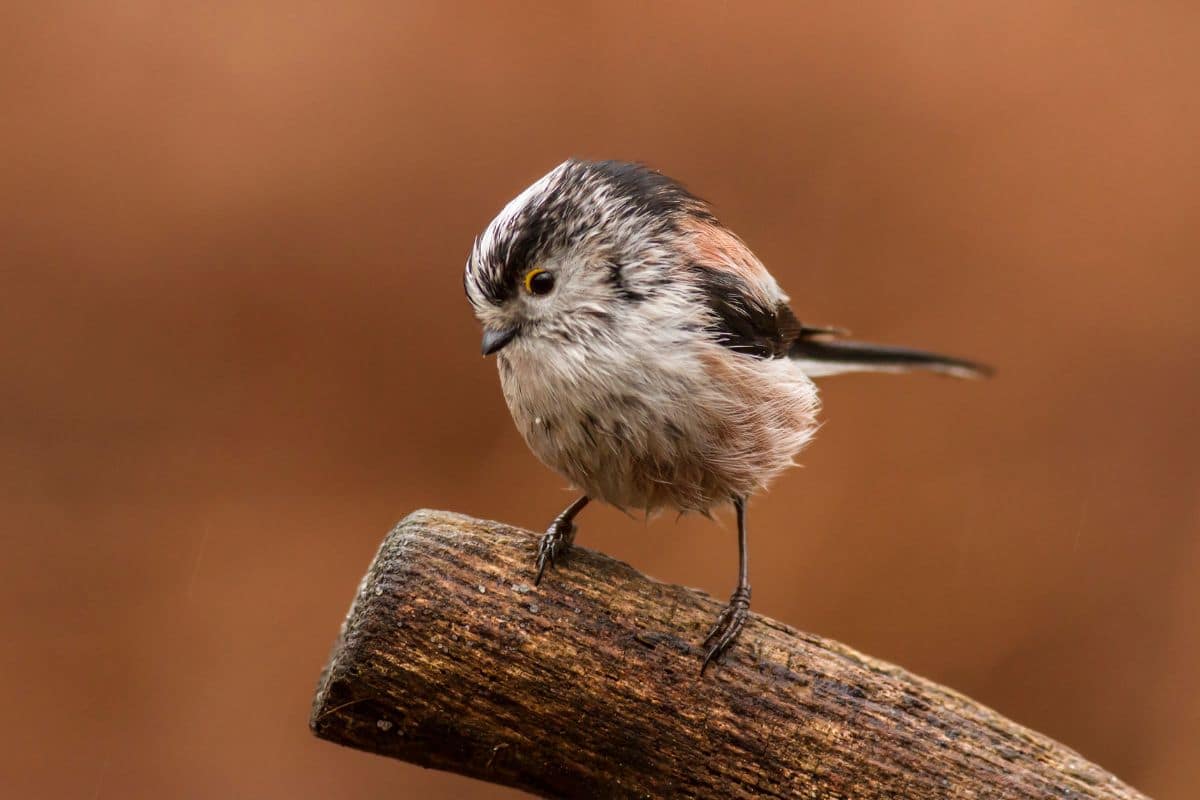
Adult long-tailed tits will raise their young for 14 to 18 days. Over this period, the hatchlings will grow into fledglings and then into self-sufficient, independent adults.
With so many young, feeding the young birds requires lots of time and energy. Fortunately, the parents don’t have to do it alone.
Long-tailed tits are social birds. If their clutch fails, they will often help other families raise their young. Nest helpers will bring the young birds food- usually insects- along with the real parents of the nest.
After a long two weeks of flying back and forth, scavenging insects, and protecting the nest, the young long-tailed tits are ready to fly. They will join their parents outside the nest and will hunt for their food. Next winter, they will find their mates and start the process again.
Flocking Behavior of Long-Tailed Tits
You will often find long-tailed tits traveling in flocks of about 20 birds. These flocks do not always contain only long-tailed tits. Long-tailed tits sometimes flock in what are known as mixed-species feeding flocks.
In these flocks, you will find long-tailed tits, blue tits, great tits, and coal tits. They all play different roles within the congregation, some charging ahead and leading the group while others hang back and are far more cautious.
Whether long-tailed tits are in a mixed flock or not, they tend to stay close to their family. Many long-tailed tits within a flock will likely be family- parents, aunts, uncles, cousins, and siblings.
Long-Tailed Tit Song and Communication
Long-tailed tits have five primary vocalizations and do not sing often. Two of their most recognizable calls are the churr and the triple.
The churr of a long-tailed tit sounds like a short series of soft, rapid sounds that blend into each other to form one sound. The triple of a long-tailed tit sounds like three distinct, high-pitched chirps.
Research on long-tailed tit calls suggests they use these two particular calls to identify the family. Long-tailed tit siblings tend to sound more similar to each other than non-siblings.
Parent birds teach their young these calls- they are not innate to the birds. As young long-tailed tits feed in their nests, they learn to sing and communicate with each other. There are distinct stages of vocal development in nestlings, and they learn to sound more like their parents as they grow up.
Research also suggests that individual long-tailed tits have unique calls and voices. This helps different members of the flock remember and identify each other.
The Impacts of Humans on Long-Tailed Tits
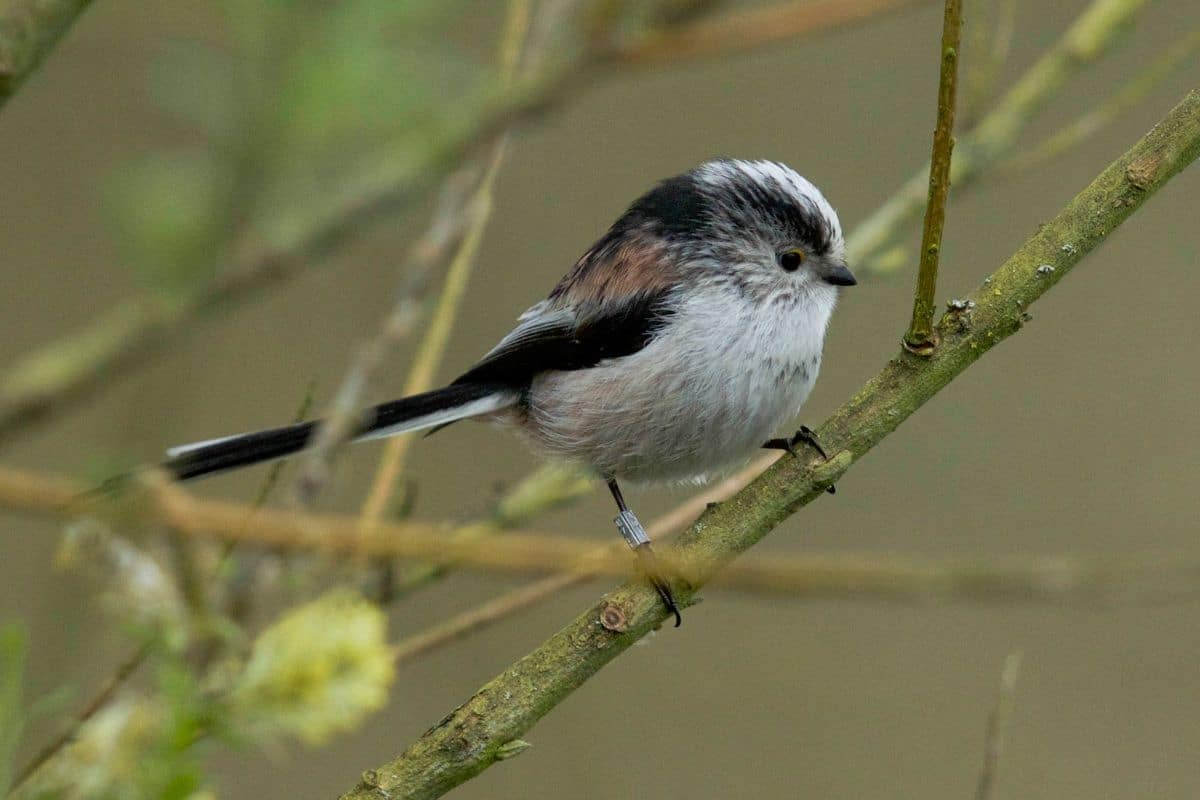
As humans and our choices increasingly shape the Earth, long-tailed tits have been greatly impacted by climate change and a changing ecosystem.
Like most animals, the full impact of changing ecology on long-tailed tits is not fully understood, though scientists have some reasonable estimates.
Climate Change and Long-Tailed Tits
For most birds, climate change will likely have devastating impacts. However, long-tailed tits are one of many lucky species that may benefit from warmer winters and earlier springs.
Cold, wet springs are devastating for long-tailed tits. It is difficult for them to find food, and there are fewer available insects. Climate change will likely bring drier weather in the spring to many of long-tailed tits’ native homelands, giving them a much-needed boost during the reproductive season.
Some of this benefit may be offset by colder, wetter autumns when most adult long-tailed tit deaths occur.
Habitat Loss for Long-Tailed Tits
Some birds, such as pigeons and crows, do well in cities and urban areas. Long-tailed tits are not among them. Long-tailed tits prefer less urban areas, such as woods and gardens, and do not do well in human-dominated regions.
Research on the impact of urbanization on birds notes that birds have limitations resulting from urban regions, even if planners leave green spaces or wildlife. Birds’ green spaces are often divided by urban sprawl and not connected as they otherwise would be.
The populations in disjointed regions struggle to intermingle as animals die crossing major roadways or cities. Because of this, birds and other species are more likely to stay in small areas, decreasing diversity and making them more vulnerable to other habitat impacts.
Frequently Asked Questions
Here are some of the most commonly asked questions about long-tailed tits.
Are long-tailed tits common in the UK?
Yes, there are more than 500 thousand long-tailed tits in the UK, and roughly 35% of bird watchers with gardens report seeing them each year.
Are long-tailed tits endangered?
No, long-tailed tits are not endangered. They are likely to benefit from climate change, as it will increase the available supply of insects in the spring.
How do you attract long-tailed tits to your garden?
Long-tailed tits prefer insect-based foods over seeds, so you can try adding mixed bugs and mealworms to your birdfeeder if you want to see them.
Wrapping Up
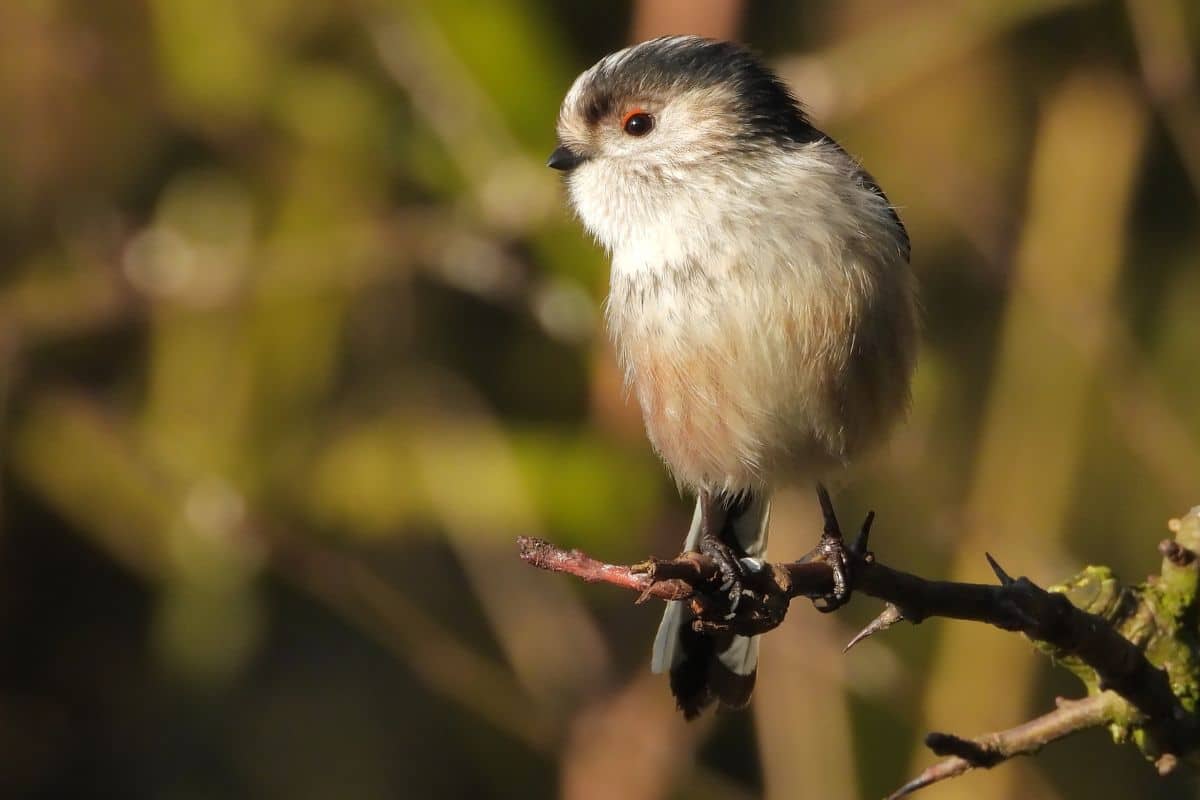
Long-tailed tits are small, cute birds that prefer forested and grassy areas. Because of this, they are more vulnerable to urbanization than other bird species.
They build large spherical nests and work as a community to raise their young. They have short lifespans- only 2 to 3 years- and have large numbers of eggs at a time to compensate.
Because of their unique call patterns, long-tailed tits recognize each other and their family members. They are social birds and are often found in flocks with other species of tit and family members.
